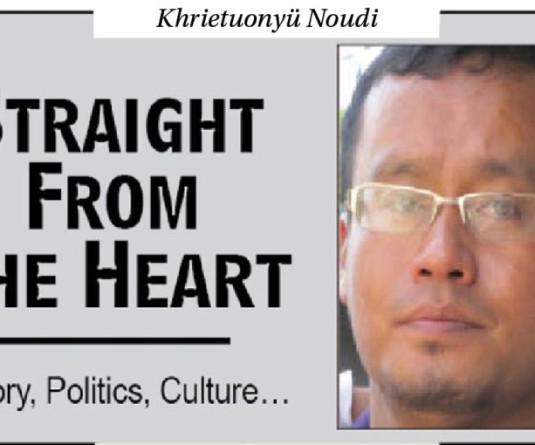
Imagine a world without language. Given that you’re looking at the computer screen right now the first thing you might imagine disappear would be the words you’re reading right now and then all the titles, headings and menus and before you know it, your mind would probably be blank and possibly driven more by instinct and emotion and default built in logic than sophisticated reasoning capacity that is stimulated by the use of language. What is a computer without software and how do we get software without programming languages?
Language is something we take for granted, but when I start thinking about it it’s a challenge just getting to define it, not to mention the very definition of language depends on language and the intricate relationship it has with our thinking and perception of reality. Language is actually a very dangerous tool. It is literally the programming language of over 6.5 billion computers on Earth we call “Brain”. There are people who think without language and people who think in language (in words) like me, but both of these types depend on being able to convert these thoughts to language so that they can communicate with others. This means that we’re very heavily dependent on language when we build the paradigms through which we perceive reality itself.
Language is a system of conventional spoken or written symbols by means of which human beings, as members of a social group and participants in its culture, express themselves. The functions of language include communication, the expression of identity, play, imaginative expression, and emotional release.
Human language probably started to develop around 100,000 years ago. There are many theories about when and how humans started to develop language. Some scientists think that all human languages arose from a common language spoken by our ancestors in Africa. There are over 6900 different languages in the world today, although some of these are nearly extinct.
Today, half of the world 6900 spoken languages are endangered; which means only spoken by parents or grand-parents of a household, without passing down to the next generations. Here is the sad assessment of the UNESCO Atlas of the World’s Languages in danger published in 2010, which lists the vitality of spoken languages in the world regarding nine indicators (of which the absolute number of speakers or the material availability of learning and education). At the hands of this critical situation, the international day of mother tongue, on the 21st of February, is the occasion to have a reflection and to think about the means of action in order to preserve endangered languages and that every individual can express himself in his mother tongue.
This contemplation has its origin from my class discussion with my Communication Technology teacher, Rev. Dr. Kavito Zhimo, who is also the principal of Trinity Theological College. The question I raised to my teacher was “Could the scarcity or lack of words in Nagas Dialects be the reason for poor standards in almost all areas of intellectual life and development in comparison to other peoples.
For example, in a class room, a teacher is to lecture on Plato’s theory of forms. There is a Naga and a Greek student from Greece. Whom do you think will grasp sooner or better? Most probably the Greek Student will, because the word “Eidos” in Greek which is “forms” in English is a general term for Greek speaking people. Whereas the Naga student will not know where to start thinking as the word “forms” is not available in his/her mother dialect. Unless the teacher explains to the Naga student in detail he/she will not able to grasp anything yet. On the other hand, the Greek student on his/her own will have first-hand ideas of the word “forms” if the word “Eidos” is presented to him/her.
The reality is that while Nagas first struggle to understand the word “forms” and then Plato’s theory of forms. Others had already gone beyond the theory of forms. Education and socialization is a process. The development of language is very important because it allows the child to communicate with others. Language makes it possible to reason with a child and explain why certain behaviour is desirable and others are not. Communication patterns are modes of communication that we use frequently in certain situations or with certain people. Some patterns may be prevalent, that is, appearing in most communications regardless of the situation, while many are situation-specific, that is, used with certain people (friends, spouse, children, boss) or in certain situations (at work, in conflict, in fear).
From this example, what I like to draw is that, as we almost think and reason in our own language and dialect, the scarcity and lack of words in our dialects is one main factor that hinders us from all round development. The very nature of the intellectual life of society is decisively influenced, controlled, directed and developed by the language and communication of a given period. We cannot become an influential people unless one develops their languages/dialects and communication pattern.
It is being verbally told by many Nagas intellectuals that Nagas never really had a civilization. They were greatly influenced by the Western expeditionary forces. In short span of time, they jump their lifestyle from head-hunting to coat suit-culture. Although we are living in a modern lifestyle, how many outstanding philosophers, technocrats, bureaucrats, scientist, teachers, scholars and inventors have we seen in the Naga society today?
In this regard, it will be wise on the part of the Nagas to enrich their dialects or languages. We can borrow words or part of a word from the different Naga dialects to form missing or essential words for everyday use. Furthermore, we can borrow words from languages of the world such as Hebrew, Greek, Latin, Spanish, Chinese and English etc. Then we can work together and develop a common Naga Dictionary, from which every Naga tribe can use it in their own language as one own language.
Puanthanh Gangmei
Convenor
The Naga Studies Group
www.nagastudiesgroup.blogspot.com
_____________________________________________________________________________
Readers may please note that the contents of the articles, letters and opinions published do not reflect the outlook of this paper nor of the Editor in any form.





